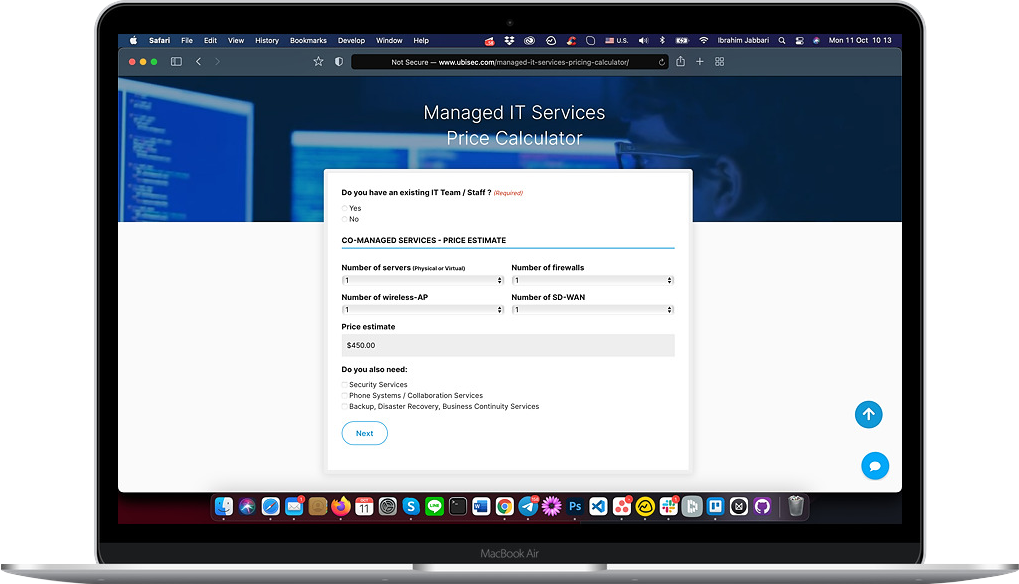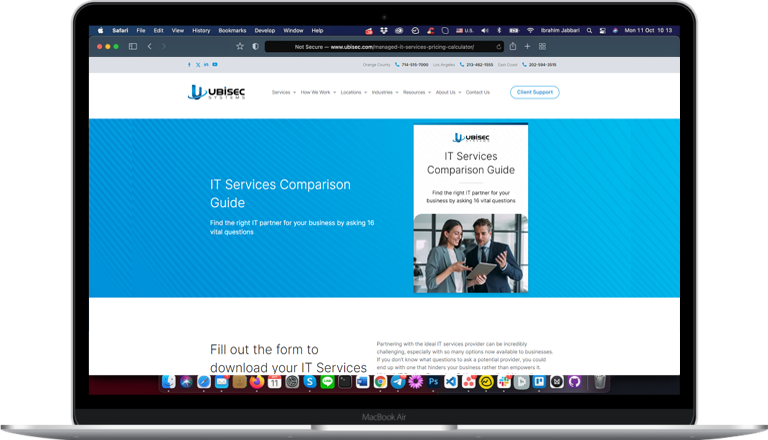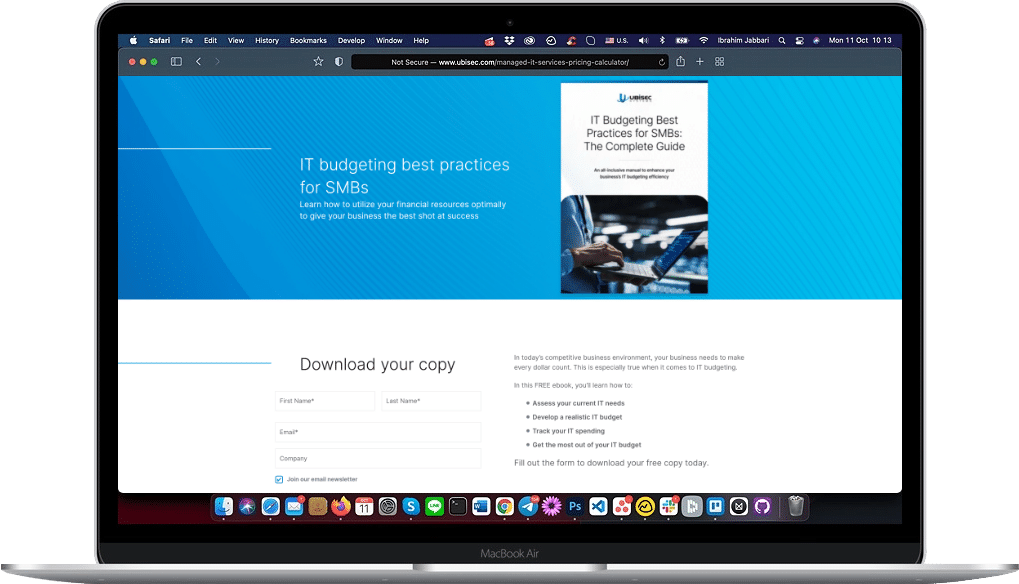In today’s digital era, businesses rely heavily on their IT infrastructure for efficient and secure operations. However, managing these systems can be challenging, leading many organizations to seek external assistance. Managed IT Services offer a solution by providing comprehensive support and expertise. In this exploration, we’ll delve into Managed IT Services, examining their functionalities, pricing structures, and crucial decision-making factors.
What Does Managed IT Services Mean?
Managed IT Services refer to businesses outsourcing their IT operations to an external provider, often called a Managed Services Provider (MSP). The MSP is responsible for managing various aspects of the business’s IT systems, including networking, data backup, security, infrastructure, systems management, and technical support. The goal is to improve business operations by reducing costs, managing risk, improving efficiency, and providing a stable and secure IT environment.

Understanding Managed Services Pricing Models
Time and Material (T&M) Pricing Model
In the Time and Material (T&M) pricing model, clients are billed according to the exact time and resources expended by the managed services provider (MSP) for a specific project. For instance, if a company engages an MSP for a network upgrade, they will compensate for the actual hours expended by the MSP’s technicians, alongside any materials employed during the process.
Advantages:
– Flexibility: The T&M model offers flexibility, allowing adjustments to be made during the project to accommodate changing requirements or unexpected challenges.
– Ideal for Uncertain Projects: This pricing model is well-suited for projects where requirements are not clearly defined upfront, as it enables the scope to evolve as needed without rigid constraints.
Disadvantages:
– Unpredictable Total Cost: One of the main drawbacks of the T&M model is its potential for cost unpredictability. Since the total cost depends on the actual time and resources consumed, it can be challenging for clients to estimate the project’s final expense accurately.
– Risk of Cost Overruns: Without a predetermined budget or cap on expenses, there is a risk of cost overruns if the project takes longer than anticipated or requires additional resources beyond the initial estimate.
Fixed Fee Pricing Model
In the Fixed Fee Pricing Model, the managed services provider (MSP) charges a predetermined, fixed fee for a specific service or project. For instance, an MSP might quote a fixed cost for implementing a cybersecurity solution for a client.
Advantages:
– Upfront Cost Transparency: Clients benefit from knowing the exact cost of the service or project upfront, which aids in budgeting and financial planning.
– Budgeting Ease: With a fixed fee, clients can allocate funds more accurately, minimizing the risk of unexpected expenses or cost overruns.
– Encourages Efficiency: Since the MSP receives the same fee regardless of how long the task takes, there is an incentive for efficiency and timely completion of the project.
Disadvantages:
– Scope Change Disputes: If the project scope changes after the agreement is made, it can lead to disputes between the client and the MSP regarding additional fees. This lack of flexibility can strain the client-provider relationship.
– Potential Quality Compromise: In some cases, the MSP may prioritize completing the project quickly to maximize profit, potentially compromising quality in the process. This rush to finish may result in overlooked details or shortcuts that impact the effectiveness of the solution.
Recurring Fee Pricing Model
In the Recurring Fee Pricing Model, the managed services provider (MSP) charges a regular, ongoing fee for continuous services, typically on a monthly basis. For example, an MSP might offer a monthly subscription for regular system maintenance and support.
Advantages:
– Predictable Revenue: The recurring fee model provides a steady stream of revenue for the MSP, enhancing financial stability and allowing for better long-term planning.
– Budgeting Ease: Clients benefit from predictable, consistent payments, making it easier to budget for IT expenses and manage cash flow effectively.
Disadvantages:
– Underutilization Concerns: Clients may feel they are paying for services they are not fully utilizing, leading to potential concerns about cost-effectiveness and value for money.
Performance-Based Pricing Model
In the Performance-Based Pricing Model, the MSP’s fee is directly tied to specific performance metrics or outcomes achieved. For instance, the MSP could be compensated based on a client’s network’s uptime or issue resolution speed.
Advantages:
– Incentivizes Performance: This model incentivizes the MSP to perform well and deliver high-quality services, as their compensation is directly linked to achieving predefined performance metrics.
– Alignment of Interests: By aligning the MSP’s interests with those of the client, the performance-based pricing model fosters a collaborative partnership focused on achieving mutual goals.
Disadvantages:
– Complexity in Measurement: Defining and measuring performance metrics accurately can be challenging, potentially leading to disagreements or disputes between the MSP and the client.
– Risk of Tunnel Vision: The MSP may prioritize metrics tied to their compensation, neglecting other aspects of their service delivery that are equally important to the client’s overall satisfaction.
Hybrid Pricing Model
The Hybrid Pricing Model melds components from various pricing structures, presenting a fusion of fixed fees, recurring charges, and performance-based fees customized to suit the client’s unique requirements and the project’s characteristics.
Advantages:
– Flexibility: The hybrid model provides flexibility, allowing for customization to accommodate varying client requirements and preferences.
– Tailored Solutions: Clients can gain advantages from a personalized pricing structure that aligns with their individual needs and budgetary constraints.
Disadvantages:
– Complexity in Implementation: Operating a hybrid pricing model can be complicated, needing thorough planning and coordination to ensure clear and fair fee structures.
– Potential for Confusion: Without clear communication and documentation, the hybrid model may lead to confusion or disputes over fees, mainly if not all aspects of the pricing structure are clearly defined upfront.
Want to know how much your Managed IT Services will cost? Click here to try our MSP calculator now!

Factors Affecting Managed Services Pricing
Scope of Services
The scope of services encompasses the breadth and depth of offerings provided by the managed services provider (MSP). As the range of services increases, so does the overall cost. The scope of services may include essential functions such as network monitoring, cybersecurity, data backup, disaster recovery, and more.
The complexity of the IT Environment
The complexity of the client’s IT infrastructure directly influences pricing. A straightforward network with a limited number of servers and workstations will incur lower management costs compared to a complex, multi-site network with numerous interconnected devices. Complexity also considers the technology stack in use and the level of customization required to meet specific business needs.
Service Level Agreements (SLAs)
Service Level Agreements (SLAs) define the level of service expected from the MSP, including response times, resolution times, and uptime guarantees. Opting for higher levels of service typically entails higher costs, reflecting the additional resources and expertise required to meet stringent SLA requirements.
Expertise of the MSP
The expertise and quality of professionals employed by the MSP significantly impact pricing. MSPs staffed with highly skilled professionals command higher rates due to the advanced knowledge and experience they bring to the table. Additionally, specialized knowledge or certifications may result in increased costs to reflect the value of such expertise.
Contract Duration
The duration of the contract is a crucial determinant of managed services pricing. Longer-term agreements often come with discounted rates, as they provide the MSP with a guaranteed income over an extended period. Conversely, short-term contracts may incur higher monthly costs due to the shorter commitment period and potentially increased resource allocation required by the MSP.
Unsure about picking the right MSP partner? Click here to download our handy IT Services Comparison Guide to help you make the right decision!

Key Considerations for Decision-Making
Define Goals
Clear goal-setting is imperative before embarking on any decision-making process. Defining objectives provides direction and facilitates the selection of the most suitable options aligned with organizational needs.
Assess Existing IT Infrastructure
A complete evaluation of the existing IT setup is essential for making well-informed decisions. Understanding existing systems and technologies helps identify areas that require upgrading, replacing, or retaining them and determine the resources necessary to support desired outcomes.
Compare Vendor Options
Reviewing and comparing different vendor options helps organizations find the best solutions that are both cost-effective and efficient. Factors to consider include product offerings, pricing structures, customer service levels, and reputation in the market.
Negotiation
Effective negotiation with vendors can lead to favorable deals and discounts, ultimately maximizing the organization’s value. Preparation is vital, and having a clear understanding of desired outcomes helps ensure successful negotiations.
Careful Scrutiny of Contracts
Thoroughly reviewing contracts before signing is essential to mitigate risks and avoid potential pitfalls. Reviewing your contracts includes identifying and understanding any hidden costs or unfavorable terms that may impact the agreement. Seeking legal advice, if necessary, can provide additional clarity and ensure all contractual obligations are clearly understood and agreed upon.
Conclusion:
Managed IT Services offer businesses a strategic approach to managing their IT infrastructure, providing cost-effective solutions, proactive support, and peace of mind. By understanding the various pricing models, key factors influencing costs, and essential decision-making considerations, businesses can make informed choices to optimize their IT operations. Partnering with Ubisec Systems ensures reliable and efficient managed IT services tailored to your needs. Contact us here to elevate your IT infrastructure and drive business success.
FAQs:
How can managed services reduce total IT cost?
By streamlining operations, minimizing downtime, and offering scalable solutions tailored to your budget.
What are the risks of using managed services?
Risks include potential data breaches, dependency on external providers, and misalignment of service quality with business needs.
What are the different types of managed IT service providers?
They vary from full-service firms to specialized providers focusing on areas like cybersecurity or cloud management.
What is the difference between T&M and fixed-fee pricing for managed services?
T&M bills based on actual hours, while fixed-fee pricing offers predetermined costs, ensuring budget transparency.









